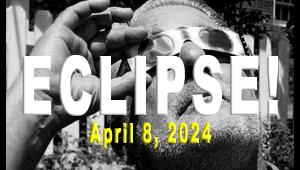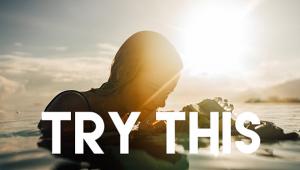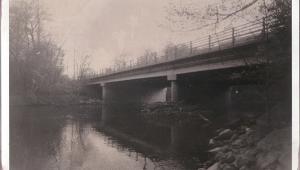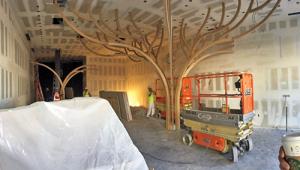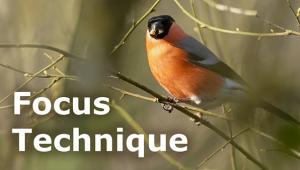Can You Really Make Money from Art Photo Sales?: How to Survive (And Thrive) As A Fine Art Photographer

Photographers have always looked to the fine art field as a marketing outlet for their personal work but can you really make money from art sales? How do you establish yourself in the business? What are the best marketing tools for finding gallery representation and fine art clients? Is your work truly “fine art”? Certainly there will be many similarities to marketing consumer or commercial photography but the fine art world has some unique pitfalls and opportunities to watch for if you plan to expand into this field.
In this column we spoke with five very diverse professionals in the fine art field about their experiences and business advice: Luis Delgado-Qualtrough, Malulu Editions; David Egan, David Egan Photography; Rhoni Epstein, PhotoTherapists; Sheri Oneal, Sheri Oneal Photography and Inspiration Avenue Art; and Ken Shung, Ken Shung Pictures.

Shutterbug: What has been your experience in establishing yourself in the fine art world?
Ken Shung: My experience in the fine art world was always something that happened alongside a commercial career path as a photographer. While shooting for commercial and editorial clients I always pursued my personal work and continued to make images that could someday be exhibited or published as fine art. I curated an exhibition with other photographers established in their fields, which led to reaching many others in the fine art field. My most recent accomplishments include having my work purchased by a museum in Switzerland at the prestigious Art Basel.
Rhoni Epstein: My consulting partner, Susan Baraz and I are considered experts in the field of fine art photography. We are both passionate collectors and understand what it takes to help others develop a consistent and cohesive body of work. This enables our clients to approach and market themselves to galleries in the United States and abroad. We have both studied and held talks on the historic reference and social impact of photography from its inception until the present. We have lectured at universities, curated gallery shows, and judged many of the most prestigious competitions worldwide.
Sheri Oneal: I have not yet established myself to the fine art community as a whole but in the early stages I am doing well in my local market in Nashville. Some galleries have said my work is not true fine art but my buyers seem to think otherwise. I do mixed media art more than just fine art prints so it is not just photography driven. I am new but learning and realize I need to have a completely different website not associated to my commercial site. It seems most clients can’t separate that I am a commercial photographer and a fine art photographer. Like any business, it is lots of work but I feel pretty confident with the new site I am designing and that the marketing efforts I have planned out will be successful. I have had art buyers in Houston and Atlanta find me as well as book publishers in California. I do know the nonprofit I founded and ran for one year helped me be seen and become known in the local market. From our fundraising, we gave back over $80,000 in a year to flood victims. Our artists were mostly from Nashville but we did have a few from other states. The online auction was worldwide. After we sold all the art we gave all the money over to the MusiCares Foundation to distribute.
David Egan: Establishing a presence in the art world is not an easy task and should not be taken lightly. It is an ongoing process for me. I am constantly looking to grow my circle and push myself out there more and more. The process is a long-term build; nothing happens overnight, it takes years to fully establish yourself.
Luis Delgado-Qualtrough: All in all it has been a positive experience, at times frustrating though. But the main reason I do artwork is for the sake of doing artwork. The rest is cream with a cherry on top.

SB: What skills or areas of expertise (other than photography) do you think a fine art photographer has to develop for a successful business to ensue?
Rhoni Epstein: Develop resilience. The internal discovery and your outer vision takes honesty and time. Stay committed to your vision, you may be one presentation showing away from success. Be someone with whom others want to engage and help. Develop discernment about your own work. Stay open and give of yourself, don’t wait to receive. Learn the business and marketing of your photography, make certain you are aware of your emotional and financial costs.
Ken Shung: Fine art photographers should have business and marketing skills to promote and help them survive financially and creatively in the field.
David Egan: A successful artist is not simply a talented and creative individual but someone who is able to run a business. There are many aspects that go into achieving a certain level of sustainability. There is always work to be done such as self-promotion, marketing, financial responsibility, and intelligent planning. All are essential.
Sheri Oneal: You definitely need a good understanding of business, knowledge and understanding of your market, great organizational skills, self-motivation, and a positive attitude! I think social media marketing is a must as well. That said, all of this is extremely important no matter what business you are trying to make successful.
Luis Delgado-Qualtrough: Marketing tools have changed so knowing the current suite of tools is essential, such as web building, e-mail marketing, Instagram, etc., but I think the most important thing is networking. For me, networking is taking advantage of possibilities from your base of contacts and expanding them for fun and profit. I have worked on boards of photography organizations such as the Consejo Mexicano de Fotografia, San Francisco Camerawork (for five years), Curatorial Committee for the San Jose Institute of Contemporary Art, and many groups for photographers, both formal and informal. I have had booths at several art fairs in San Francisco and Los Angeles, which have expanded my collector base and given me an insight into the art market. I have volunteered for several other non-photographic nonprofits and worked for many theater companies. I have hosted parties and dinners with curators and collectors, donated work for art auctions, and, in general, just gotten out there. I am a believer in that if you are open and willing to share information, then you will reap a bounty of benefits.

SB: What type of approach do you recommend for finding gallery representation?
David Egan: Gallery representation can be difficult but is certainly doable. I recommend starting small. Find a smaller local gallery and approach them about the possibility of having a sit-down and discussing the idea of showing your work. At the very least, I also highly recommend entering into group show submissions to begin establishing a curriculum vitae (CV). I think that being persistent is key.
Sheri Oneal: I think you have to find someone who understands you and also has a similar personality. Art is so subjective with the buyer but I think that carries over to the seller as well. You need to look for someone who likes your style and believes in your vision.
Luis Delgado-Qualtrough: I recommend portfolio reviews and personal networking, which will lead to recommendations. Make sure you research the galleries you are interested in, go to art fairs to take a look. Never approach a gallery at an art fair or opening as the gallerist is there to pay his bills, not look at your work.
Ken Shung: Research the galleries that you feel would best represent your kind of style and your approach to fine art photography and then market your work to the director and gallery owners. Having your work noticed by galleries helps but a direct introduction through another artist is the best approach.
Rhoni Epstein: Know what you want and with whom you want to do it. Attend openings at art fairs, galleries, and museums. Support other fine artists to build a strong community for support and inspiration. Seek mentoring by those whom you respect. Subscribe to several fine art publications. Look at what’s current and see how your work and your vision fit in or are hopefully saying something new. Show that you understand and know how to present your work. Have a set size and matting format. Your work must be a visually cohesive series that is consistent with your vision, which will help a gallery envision your work on their walls. All work has to come from the same place inside of you, whether it be portraits, landscapes, collages, or whatever you choose to photograph. A Penn photograph is clearly his work, be it fashion, portraits of African tribes, or products for advertising.

SB: Given the many ways to promote fine art photography, what marketing techniques would you suggest work best for fine art clients such as corporate art buyers, collectors, museums, art book publishers, or interior designers?
Rhoni Epstein: Start expanding your network by showing your work to everyone: reviewers, teachers, photographers, friends, curators, gallerists and their assistants, designers, corporate art buyers, hospitality industry buyers. Enter top competitions and connect with the judges, after the competition, via written or e-mail request for direct feedback. Be respectful to critiques and become the person with whom people want to be connected and help. Have fun with social media; post images, it is an immediate way to share what’s current for you.
Sheri Oneal: I am very early on in this market but through my research I think being active online is key. You need to make an effort to have gallery work shown in New York. You have to be discovered. Instagram is a good place where I am finding a lot of art buyers searching. LinkedIn is good to dig into, a lot of great groups to join and learn from each other. Like anything visual, you have to get it out there and you have to be seen to be found! I have been found on LinkedIn by several art buyers even without much to show so that seems promising. For other markets, such as museums or publishers, good Search Engine Optimization (SEO) and a blog with good content are essential. The key to fine art marketing is sharing, sharing, and more sharing! Book publishers are out there searching the Internet so good SEO with a strong responsive web design that is simple, not cluttered, and loads fast is key. I also think you have to sound interesting, have a good bio, an interesting background. You must make yourself look like a star; your bio needs to be written well and sound intriguing.
Luis Delgado-Qualtrough: Portfolio reviews have paid off for me. FotoFest in my book is the best value for getting national and international exposure; Photolucida is fun but not international. There are many others here in the USA and internationally. The best tactic to follow is to research who the reviewers are and go from there. The reviewers are on the review circuit so they can be approached at different times. I would venture to some reviews in Europe, depending on your budget and the focus of your work, either editorial or fine art. The key is to get out there and stay out there. Creating new fresh work is equally important to marketing efforts.
Ken Shung: Promoting your fine art photography is something that involves everything that is possible to you on the Internet and by conventional methods. You can research or purchase a mailing list that will let you contact buyers in the field and budget yourself for a year of mailing campaigns and e-mail announcements. I use Agency Access to create mailing lists for my marketing. Using social media has also become a good source to find people to market to.

SB: What advice do you have for those starting in the field of fine art photography—what pitfalls to avoid and what opportunities to look for?
Rhoni Epstein: Enjoy the process and also see the finish line! Sharing your vision must be your all-encompassing passion; it’s your life so enjoy the ride. Pitfalls in any business are the same: negative self-talk, lacking passion and focus, and remaining invisible to the public.
Ken Shung: My advice to those starting out is to continue to build relationships with the markets that you have sought and continue for at least 10 years before you decide to change your strategy. The most important advice I have is to make new work all the time. Make a reputation for yourself with work that has your voice attached to it.
Sheri Oneal: Don’t pay others a fee to have your work shown. I have found it not to be helpful. Galleries and reps make their cut so there is no need to pay more in the hopes of being seen. You can rent a space locally if you are in a good market, hype it up in the media, and if you have a good plan I think you will do better than paying someone else to do it for you. Generally the people who want you to pay to show your work will also want 40 to 50 percent of what sells—if something sells. Use all the online sites offering free small space to share your work; it allows more work to be seen, your name to be searched, and people all over the world to discover your work. A partial list of these sites includes: bluecanvas.com, creativemornings.com, rawartists.org, talenthouse.com, saatchiart.com.
Luis Delgado-Qualtrough: The most important thing is be true to your vision and to your work, the rest is just marketing. If you want your work to endure the test of time then create timely and honest work. Be polite, know how to make smart chitchat, speak several languages, and be kind to the guy behind you. Be willing to listen as you can always learn something.
David Egan: Starting in the fine art photographic world will not be a piece of cake. More than anything I recommend staying positive and continuing to push, there will be a lot of highs and lows. I would set small goals for myself, taking things one step at a time. Don’t expect the Museum of Modern Art (MoMA) to come knocking on your door simply because you have had a photograph receive 100 likes on Instagram or Facebook. If you have the talent and ability then don’t stop until you have reached your goals.
Web Resources
Luis Delgado-Qualtrough: www.malulu.com, www.delgadofoto.com
David Egan: www.egandavid.com, www.baronegan.tumblr.com
Rhoni Epstein: www.phototherapists.com, twitter.com/coachrhoni
Sheri Oneal: www.sherioneal.com, www.inspirationavenue.com
Ken Shung: www.kenshung.com, www.kenshungpictures.com
- Log in or register to post comments

